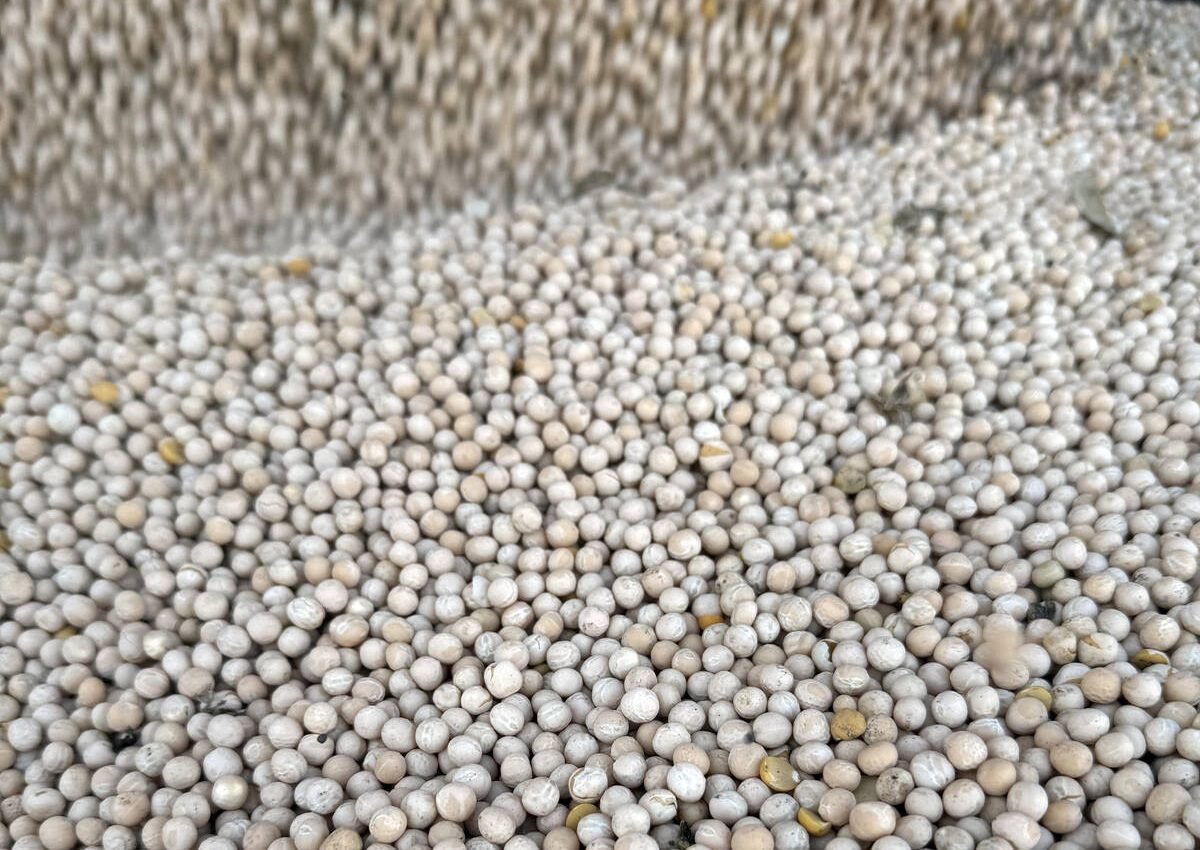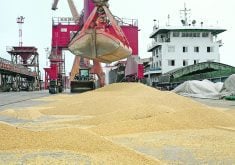SASKATOON — Yellow pea prices have collapsed due to tepid demand, according to Stat Publishing.
“Markets are worried by the slow pace of open season demand, especially from Asian destinations,” Stat editor Brian Clancey said in a recent article.
Yellow pea prices were $6.74 per bushel as of Sept. 3, down from $9.25 a couple of weeks earlier, a 27 per cent drop.
Kent Anholt, operations manager with Rayglen Commodities Inc., said it is easy to point the finger at where the blame lies.
China announced in March that it was implementing a 100 per cent tariff on Canadian peas and other agricultural products in response to its anti-discrimination investigation regarding Canada’s tariffs on Chinese electric vehicles, steel and aluminum products.
Read Also

Defence investments could benefit agriculture
A bump in Canada’s NATO spending commitments could lead to infrastructure investments that would benefit rural areas
Anholt said that was a big blow to the industry that is coming to roost as harvest pressure mounts.
China has been the top buyer of Canadian yellow peas since 2017 when India started reducing its purchases.
The five-year average for yellow pea exports to China was 1.5 million tonnes, valued at $740 million annually.
Stat said India is not going to be much help either due to stock accumulations from prior imports of Canadian and Russian peas, which are limiting short-term buying interest.
Indian importers are also wary that import tariffs could be reimposed on yellow peas because those imports are reducing prices for local farmers, which could result in reduced pulse planting for the upcoming rabi season.
“The net effect is some companies have withdrawn bids to Canadian farmers, while others have reduced them to levels they hope will discourage selling or at least pose little financial risk while waiting for buyers to return,” said Clancey.
Australia is harvesting a massive crop of desi chickpeas, which will compete with Canadian yellow peas in the Indian market.
Farmers in Australia will harvest an estimated 2.1 million tonnes of the crop, which is double the five-year average and the second-largest on record.
Anholt said that will dampen Indian demand for yellow peas.
“Any other country hitting the export market with product is going to have an effect for sure,” he said.
Statistics Canada’s preliminary crop production estimates peg Canadian pea production at 3.41 million tonnes, up from three million tonnes last year.
Some market participants think that number will be revised upward in the September and December estimates, said Clancey.
Anholt said it certainly doesn’t feel like Canada will be short on production based on the conversations he has had with growers.
“I don’t think I’m letting the cat out of the bag to say that guys have been happy with yields so far for sure,” he said.
“Quality has been a little bit more questionable.”
Stat said some buyers are confused why green pea prices have been firm compared to yellows when Canada could be producing 452,000 tonnes of the crop, up from 348,100 tonnes last year.
Processors and exporters say it is because the proportion of good quality, human-consumption green peas is down due to bleaching and other quality issues caused by weather this year.
“This suggests spreads between high-quality greens. And those with higher bleach counts could widen, masking the impact of higher gross production,” said Clancey.
















